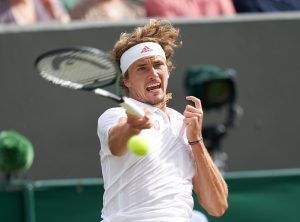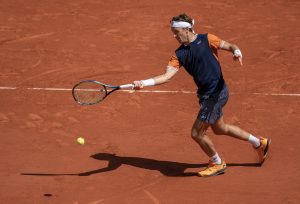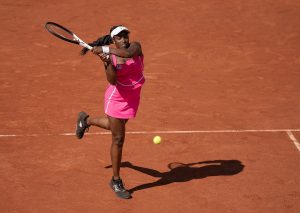The Davis Cup loves to describe itself as “The World Cup of Tennis”. Indeed, it has copyrighted that very phrase and proudly proclaims it from its website, especially in the wake of Spain’s first victory in the new, week-long format that has just finished in Madrid. However, using its own business logic, the Davis Cup should be sued under the trade descriptions act, because it is not a “World Cup of Tennis” and never will be, prompting the question: why can’t tennis, like most other major sports, have a REAL World Cup?
The two basic tenets of any “World Cup” in any sport, starting with football (which held the first “World Cup” of any major sport in Uruguay in 1930), is that it should be a relative rarity, an event that takes place once only every few years (four has long been established as the ideal gap between tournaments), and that it is the absolute career highlight/ crowning achievement of that sport, at least as it is played at national level.
Judged against both those fundamental criteria – relative rarity and singular importance – the Davis Cup has never been a real “World Cup” of tennis. First of all, it is played for annually, and so players have always known that if they missed out or chose not to play one year, they would have another chance the following year. Secondly, the very reason that the new, week-long format was adopted in the first place was precisely because the greatest players in the world were not entering the Davis Cup in its old format and instead focusing on their own individual careers. Although is true that two of “The Big Three” (Nadal and Djokovic) did compete in Madrid, the other member of the triumvirate, Roger Federer, who for the time being at least is still statistically the greatest male tennis player ever, chose not to play, and his lead was followed by a considerable number of other top players, notably Germany’s Sacha Zverev, who chose to accompany Federer on his Latin American exhibition tour rather than play in Spain.
There have been many problems with the new format for the Davis Cup, but the biggest by far was the almost ludicrous scheduling, which, in trying to cram what was an annual event into just seven days, was the sporting equivalent of trying to pour a quart into a pint pot. This led to some matches finishing literally in the middle of the night, others in which one team had enjoyed significantly more rest than its opponent and above all a sense of rushing through something that should really have been savoured.
The figurehead for the new format, Spain and Barcelona footballer Gerard Pique, has already spoken about trying to extend the tournament to at least two weeks in the future, which would be a considerable improvement on the current one-week model. However, Pique and all the other organisers are still missing, and always have missed, the absolutely crucial point, namely that to make the Davis Cup a genuine “World Cup of Tennis” (as they so proudly proclaim it to be), they need to change it from an annual event to a quadrennial event.
That alone is what would make the Davis Cup a real “World Cup of Tennis”, bringing it into line with every other major sporting World Cup, such as those in football, rugby (union and league) and cricket, by making it a genuinely exceptional tournament, one that took place only once every four years and that therefore featured far higher on the radar of players, who knew that, at most, they would only ever have three or four attempts to play in it. Instantly, that would give the “Davis Cup” (if the original name was retained) a rarity value, a cachet and a sheer singularity that would make it infinitely more attractive to all players, including even the very best like Federer.
As has already been identified by Pique himself, the ideal time to have a Davis Cup or equivalent tournament is in the autumn, say late September or early October, after the last Grand Slam of the year in New York. However, to effect that change will require enormous alteration to the whole tennis calendar. The existing schedule would have to be rewritten completely to allow for the movement of the Davis Cup or equivalent to that time of year from its present slot, right at the end of the year. But if that change only had to happen once every four years, it would be a lot easier to effect.
Of course, it is the competition between all the administrators and other vested interests in tennis, from the Davis Cup itself to the ATP to the individual tournaments (particularly those in Asia and Europe in the autumn that would be most affected by this kind of calendar change), that plagued the Davis Cup in its old format and that threatens the success of its new format. However, as in almost every other form of human activity, ultimately money talks and ultimately it will be the possibility to make far more money from the Davis Cup than is currently being made that will be the strongest argument for change.
Simon Briggs, the Tennis Correspondent for Britain’s Daily Telegraph, wrote in the aftermath of Madrid that “the financial model still seems baffling”. As Briggs explained, put simply the current incarnation of the Davis Cup (the model designed by Kosmos, the investment group that Pique is also the figurehead for) will make “Masters money”, i.e. about $40 million to $50 million from broadcasting, sponsorship, ticket money etc, which is in line with what a regular Masters event, like the one in Madrid, would make each year. The problem is that Kosmos have paid “Major money” (i.e. Grand Slam money) for the event – $3 billion over 25 years, which equates to about $120 million a year and which is roughly the amount that each of the four Majors in tennis (the Australian Open, the French Open, Wimbledon and the US Open) generate annually.
The solution to this apparent conundrum is simple – to make the Davis Cup a genuine World Cup of tennis by staging it only once every four years, for a minimum of two weeks but possibly up to four weeks (the average length of time of World Cup tournaments in most other major sports). That would make it truly the fifth Major, and the only team-based Major, in tennis. Then it would at least have a chance of generating the kind of money that Kosmos have paid for it and hope to make from it.
Putting the money to one side, however, the real prize that is on offer for tennis as a whole is to create not just a genuine Tennis World Cup but arguably the second biggest, most prestigious and globally viewed World Cup in all of sport, behind only the football World Cup and easily outstripping in scale and global reach almost every other World Cup, from rugby to cricket to golf. The kind of money, coverage and memories that such a tournament – whether it is still called “The Davis Cup” or, more accurately, “The Tennis World Cup” – would generate would make what has happened in Madrid over the last week look like a glorified exhibition series.
There are all kinds of reasons (mainly economic, as advanced by the existing vested interests within the game) why there has not yet been a true “World Cup of Tennis”, and why the old and largely failing model of the “Davis Cup” has been persevered with and now adapted. But they absolutely pale and falter in comparison with the biggest argument as to why there should be such a tournament (one that is, crucially, held only once every four years). It is that nothing else in tennis could do more to sustain and, better still, grow the sport in the coming century. Hopefully a hundred years from now (if we are not all under water, which tragically is an increasingly realistic prospect), the World Cup of Tennis will be as firmly established and nearly as planet-grabbing as the football World Cup, and our great-grandchildren will wonder how on earth tennis ever lived without it.
Main Photo:






